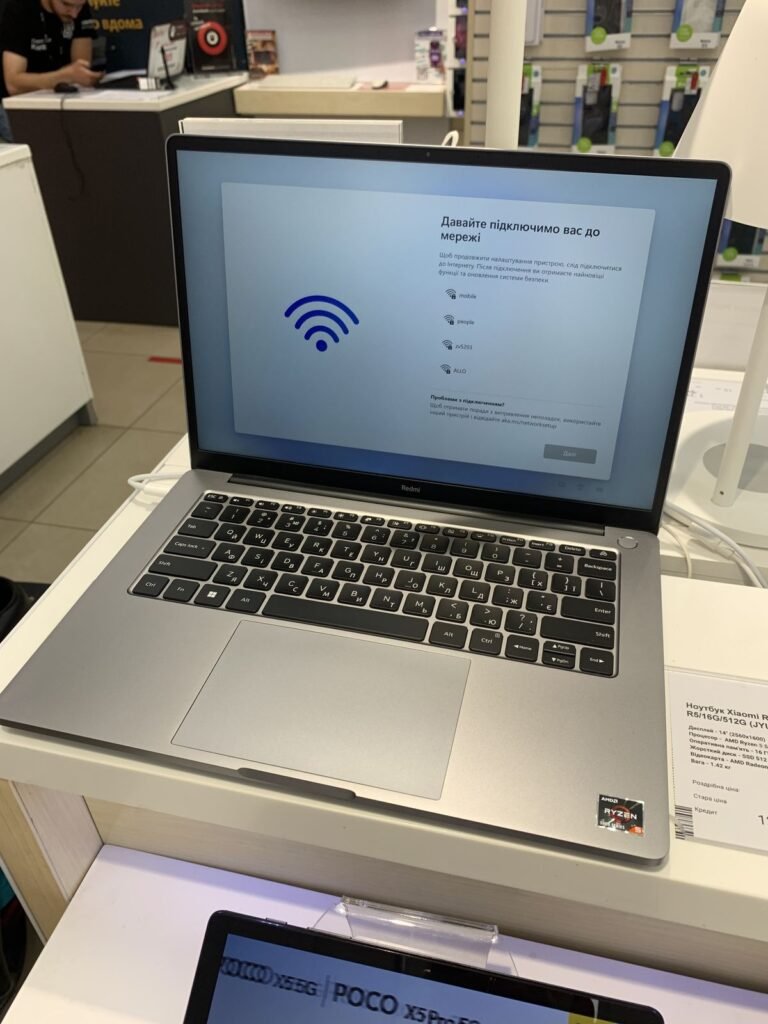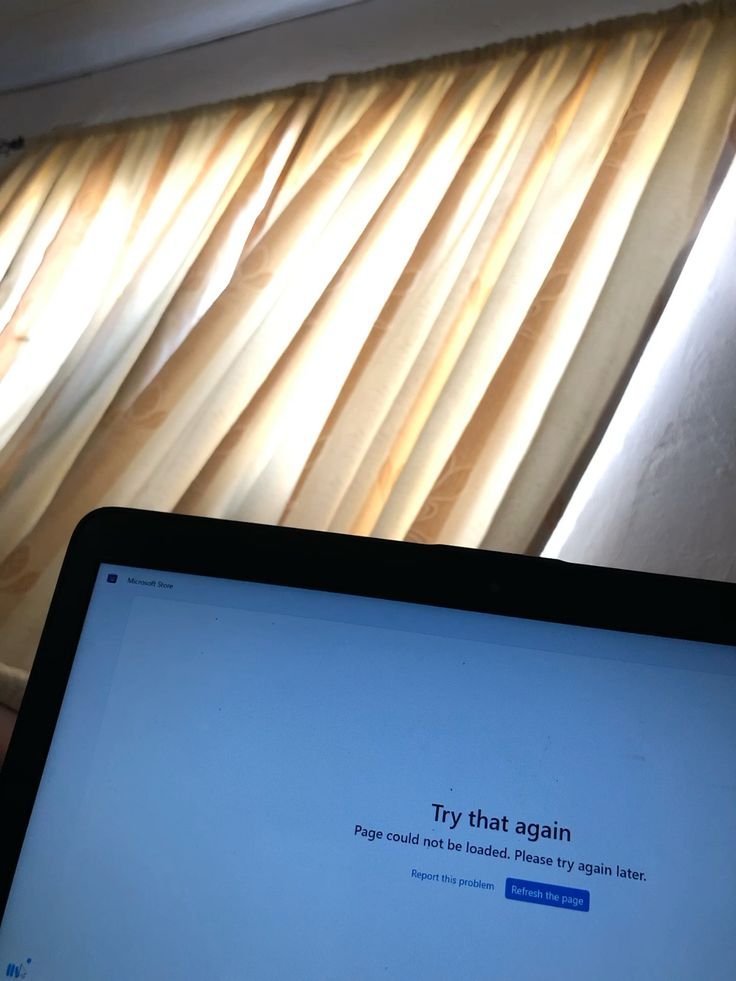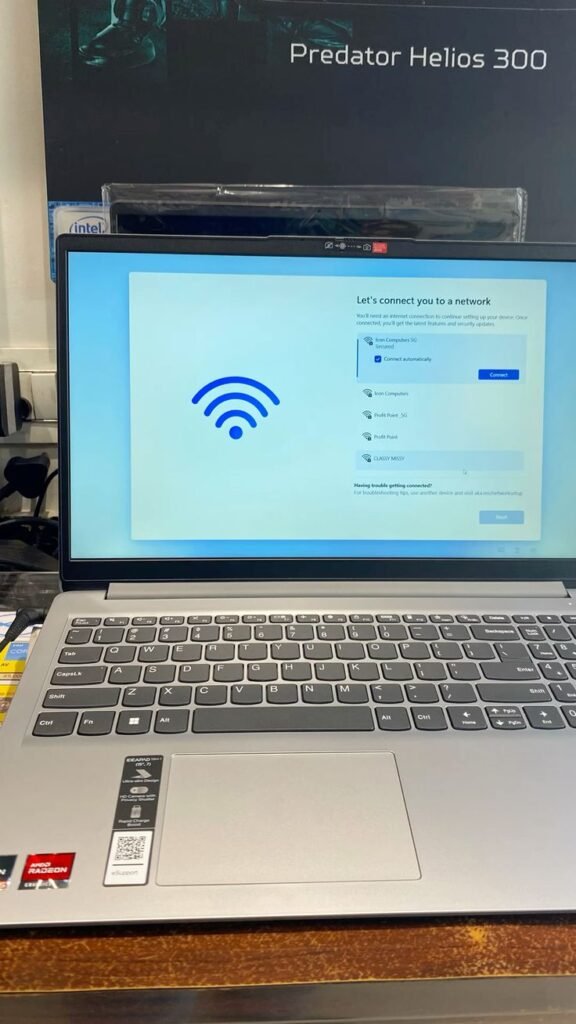Introduction: The Digital Divide in Education
The rise of e-learning has transformed education, allowing students to access lessons from anywhere in the world. However, this digital shift has also highlighted a major challenge: poor internet connectivity. For many learners, especially in rural or underserved areas, unstable or slow connections make attending live classes, accessing course materials, and participating in online discussions difficult. These connectivity issues create a digital divide, where some students enjoy seamless learning experiences while others struggle to keep up.
The impact goes beyond academics, affecting engagement, motivation, and overall confidence in learning. Addressing this challenge is critical for ensuring equitable access to education. In this article, we will explore how poor internet connections disrupt online learning, the reasons behind these issues, and practical strategies for students, teachers, and institutions to overcome them.
The rise of e-learning has revolutionized education, breaking geographical barriers and enabling millions of learners to access knowledge from the comfort of their homes. However, this progress comes with its own set of challenges, and poor internet connectivity stands out as the biggest barrier to effective online learning.
Students and professionals around the world experience difficulties due to unstable connections, ranging from disrupted video calls to incomplete downloads and lagging platforms. These interruptions not only affect the quality of education but also lead to frustration, stress, and inequality in access to resources. In this article, we’ll explore how poor internet connectivity impacts online learning, the reasons behind it, and practical solutions for learners, educators, and policymakers.
1. Understanding the Role of Internet in Online Learning
The internet is the backbone of online education, enabling students and educators to connect, share resources, and collaborate across distances. From live video lectures and webinars to interactive quizzes and downloadable course materials, nearly every aspect of e-learning relies on a stable connection. A strong Poor Internet Connection ensures smooth streaming of high-quality videos, real-time communication through chat or video calls, and seamless access to cloud-based learning platforms. Conversely, weak or inconsistent connections can lead to buffering, missed information, and frustration, disrupting the learning process.
Beyond functionality, reliable Poor Internet Connection also fosters engagement, allowing students to participate actively in discussions, group projects, and collaborative assignments. For educators, it ensures lessons run efficiently and students receive consistent support. In essence, the Poor Internet Connectionis not just a tool but the foundation of modern education, and without it, the effectiveness of online learning is severely compromised.
The Poor Internet Connectionis the backbone of e-learning. From live video lectures on Zoom or Teams to asynchronous platforms like Coursera, Udemy, and Khan Academy, every element of online education depends on a reliable connection. High-speed internet ensures seamless video streaming, real-time collaboration, quick file sharing, and access to interactive tools. When connections are weak or inconsistent, learners face delays, missed information, and a sense of disconnection. For teachers, it becomes nearly impossible to maintain engagement in a lag-filled environment. In short, a poor connection undermines the very foundation of e-learning.

2. Common Connectivity Issues Faced by Learners
Students engaged in online learning often encounter a range of connectivity problems that hinder their educational experience. One of the most common issues is video buffering, where lectures pause or lag, making it difficult to follow along. Audio distortions or delays further complicate understanding, causing learners to miss critical explanations. Dropped calls during live classes interrupt participation, while slow upload or download speeds can delay submission of assignments and access to study materials.
Additionally, platform glitches such as freezing, crashing, or slow-loading content often occur when Poor Internet Connection signals are weak. These connectivity challenges not only disrupt learning but also reduce engagement, cause frustration, and create a sense of isolation among students. Recognizing these problems is the first step toward finding practical solutions, ensuring that learners can continue their education effectively despite technical obstacles.
Poor Poor Internet Connection manifests in many forms during online learning. Some of the most common issues include:
- Buffering Videos: Lessons pause frequently, breaking concentration.
- Audio Lag or Distortion: Students miss critical explanations due to choppy audio.
- Dropped Calls: Learners get disconnected during live sessions.
- Slow Upload/Download Speeds: Sharing assignments or accessing study materials becomes time-consuming.
- Platform Glitches: Learning apps freeze or crash due to weak signals.
Each of these issues not only wastes valuable learning time but also leaves learners feeling frustrated and left behind compared to peers with better connectivity.
3. The Global Digital Divide
The digital divide refers to the unequal access to reliable Poor Internet Connection and digital resources across different regions and communities. While urban areas often enjoy high-speed broadband and advanced connectivity, rural and underdeveloped regions frequently face limited or unstable internet access. This disparity affects millions of learners, creating a gap where some students can participate fully in online education while others struggle to attend live classes or access digital materials.
Even in developed countries, low-income households may lack sufficient Poor Internet Connection speeds or devices, further widening the gap. The global digital divide not only impacts academic performance but also reinforces social and economic inequalities. Addressing this divide is critical for making e-learning inclusive, ensuring that all students—regardless of location or background—have the opportunity to benefit from modern educational technologies.
The Poor Internet Connection challenge is not uniform across the globe. Urban areas often enjoy high-speed connections, while rural or underdeveloped regions struggle with limited access. According to global studies, millions of learners in developing countries face difficulties because broadband infrastructure is weak or unaffordable. Even in developed nations, underserved communities and low-income households are disproportionately affected. This digital divide creates an education gap where opportunities are limited for those without reliable connectivity, reinforcing inequalities that e-learning was meant to overcome.
4. Impact on Students
Poor internet connectivity significantly affects students’ learning experiences and academic outcomes. Frequent disruptions during online classes, such as buffering videos or dropped calls, lead to missed information and gaps in understanding. This can cause frustration, stress, and reduced motivation to engage with lessons. Students may also feel isolated, as limited connectivity prevents active participation in discussions, group projects, and collaborative activities.
Over time, these challenges can negatively impact performance, confidence, and overall satisfaction with e-learning. In addition, students with stable Poor Internet Connection access advance more quickly, creating disparities and a sense of inequality among learners. Addressing connectivity issues is therefore crucial not only for academic success but also for fostering an inclusive, engaging, and stress-free online learning environment.
For students, poor internet connectivity results in more than just missed lessons. It leads to:
- Learning Gaps: Missing out on important information affects academic performance.
- Stress and Anxiety: Struggling to keep up creates frustration and mental fatigue.
- Low Engagement: Students disengage when sessions constantly freeze or lag.
- Inequality: Learners with better Poor Internet Connection move ahead, while others fall behind.
These effects not only hinder academic progress but also impact confidence and motivation, making students feel isolated in their learning journey.

5. Impact on Teachers and Educators
Poor internet connectivity affects educators just as much as students, making it difficult to deliver lessons smoothly and maintain engagement. Teachers often face disrupted live sessions, delayed responses from students, and challenges in managing interactive tools or collaborative platforms. Repeated technical issues may force educators to repeat instructions, extend lesson times, or provide additional resources to compensate, increasing their workload.
Connectivity problems can also limit teachers’ ability to monitor participation, assess performance in real time, and offer timely feedback. Over time, these obstacles contribute to stress, reduced teaching efficiency, and diminished satisfaction with online instruction. Ensuring reliable Poor Internet Connection access for both teachers and students is essential to maintain the quality, consistency, and effectiveness of e-learning.
Poor connectivity doesn’t just affect learners—it’s equally challenging for educators. Teachers experience:
- Difficulty maintaining a smooth flow of lessons.
- Repetition of instructions due to disconnections.
- Lower student participation in discussions and group tasks.
- Reduced teaching efficiency when classes take longer than planned.
This creates additional workload, as educators often need to provide offline materials, repeat lectures, or extend deadlines to compensate for poor connectivity among students.
6. Psychological Impact of Poor Connectivity
Frequent connectivity issues in online learning not only disrupt education but also take a toll on the mental well-being of both students and educators. Students often experience frustration, stress, and anxiety when lessons are interrupted by buffering, dropped calls, or lagging platforms. They may feel embarrassed in class if they are unable to participate due to poor internet, leading to a decline in confidence and engagement.
Teachers also face stress when lessons cannot proceed smoothly, requiring repeated explanations or adjustments to lesson plans. Over time, these challenges can lead to “digital fatigue,” decreased motivation, and even burnout. Addressing connectivity issues is therefore not just a technical concern but a critical step in promoting a supportive and mentally healthy online learning environment for all participants.
Technical issues in online learning don’t just disrupt classes—they take a toll on mental health. Constant buffering, dropped calls, and missed deadlines cause stress and feelings of helplessness. Students may feel embarrassed when they cannot respond quickly due to connectivity issues, leading to lower confidence. Over time, this digital struggle results in “Zoom fatigue,” frustration with online learning, and in some cases, higher dropout rates from online courses.
7. Technical Reasons Behind Poor Internet Connection
Poor internet connectivity in online learning can result from a variety of technical factors. Weak infrastructure in rural or remote areas often limits broadband availability and speed, making it difficult for students to access live lectures or digital resources. Network overload during peak hours can slow down connections, especially in households with multiple devices using the same bandwidth.
Low bandwidth may prevent smooth video streaming or file downloads, while older devices or outdated software can struggle to support modern e-learning platforms. Additionally, geographical challenges, such as distance from network towers or difficult terrain, can further weaken signals. Understanding these technical causes is essential for finding effective solutions, whether through upgrading equipment, optimizing network settings, or using alternative connectivity methods to ensure uninterrupted learning.
Several factors contribute to poor internet connectivity:
- Weak Infrastructure: Limited broadband facilities in rural or remote areas.
- Network Overload: Too many users on the same network during peak hours.
- Low Bandwidth: Insufficient speeds for video streaming and online platforms.
- Device Limitations: Old devices or outdated software restricting performance.
- Geographical Challenges: Terrain and distance from service providers reduce signal strength.
Understanding these causes helps identify solutions tailored to different scenarios.

8. Practical Solutions for Students
Students can take several practical steps to minimize the impact of poor internet connectivity and ensure smoother online learning. Downloading lessons and study materials in advance allows them to access content even when the connection is unstable. Using lower video quality during live sessions helps reduce buffering and lag. Positioning devices closer to Wi-Fi routers or connecting directly via LAN cables can provide a more stable connection.
Students should also close background applications that consume bandwidth and limit simultaneous device usage in the household. Communicating connectivity challenges with teachers is equally important, as it allows for alternative arrangements, such as submitting assignments offline or accessing recorded lectures. By adopting these strategies, students can maintain engagement and continue learning effectively despite technical limitations.
Students can take proactive steps to reduce the impact of poor internet:
- Download lessons and study materials in advance when connections are stable.
- Use lower video quality in live sessions to save bandwidth.
- Position devices closer to Wi-Fi routers or use LAN cables for stable connections.
- Turn off background apps that consume data.
- Inform teachers about connectivity struggles to seek alternative arrangements.
These small adjustments can make online learning more manageable even with limited Poor Internet Connection access.
9. Solutions for Educators
Educators can play a crucial role in mitigating the effects of poor internet connectivity on students. Recording lectures allows learners to access lessons later, ensuring that no one misses important content due to dropped calls or buffering issues. Providing downloadable resources like PDFs, slides, and notes enables students with limited bandwidth to study offline.
Teachers can also encourage asynchronous discussions through forums or chat platforms, allowing participation without requiring a stable real-time connection. Designing assignments that do not rely heavily on live interaction helps reduce pressure on students with unstable Poor Internet Connection. Additionally, using low-data platforms or applications optimized for slower connections can make learning more accessible. By implementing these strategies, educators can create a more inclusive and effective online learning environment for all students.
Teachers can also help minimize the impact of poor internet by:
- Recording lectures so students can access them later.
- Providing downloadable resources like PDFs, slides, and notes.
- Encouraging asynchronous discussions through forums or chat groups.
- Designing assignments that don’t rely heavily on real-time participation.
- Using low-data platforms where possible.
This flexibility ensures inclusivity, making sure students with weak connections are not left behind.
10. Role of Institutions and Governments
Educational institutions and governments play a vital role in bridging the connectivity gap. Investments in broadband infrastructure, free or subsidized Poor Internet Connection access for students, and partnerships with telecom providers can make a massive difference. During the COVID-19 pandemic, some governments distributed tablets and subsidized internet packages to ensure continuity in education—an example that should become a long-term practice. Policies must focus on equal access to digital education as a basic right.
11. Technology Solutions and Innovations
Technology plays a vital role in overcoming connectivity challenges in online learning. Learning Management Systems (LMS) like Moodle, Google Classroom, and Canvas often allow students to download lessons and access materials offline, reducing dependence on constant Poor Internet Connection access. Data-light applications are designed to consume less bandwidth while still providing interactive content and assessments.
Technology can also help overcome connectivity issues:
- Learning Management Systems (LMS): Platforms like Moodle and Google Classroom allow offline access.
- Data-Light Apps: Applications designed to consume less Poor Internet Connection for smoother access.
- AI-Powered Tools: Intelligent compression of videos and files reduces data usage.
- Mobile-Based Learning: Leveraging smartphones, which are more common than laptops in many regions.
These innovations make online learning more inclusive, even in areas with limited bandwidth.
12. Preparing for the Future of E-Learning
The future of education will continue to be digital, and overcoming poor internet connectivity is essential for progress. Stakeholders—students, teachers, institutions, and policymakers—must collaborate to create sustainable solutions. Hybrid learning models, where online tools complement in-person education, can balance the challenges. With the advancement of 5G and satellite Poor Internet Connection technologies, the hope is that connectivity barriers will reduce over time, creating a more equal and effective learning environment for all.
Conclusion: Bridging the Connectivity Gap for Better Learning
Poor internet connectivity remains the single biggest barrier to effective online learning. It creates educational inequalities, disrupts engagement, and impacts the mental well-being of both students and teachers. However, this challenge is not insurmountable. With a combination of practical student strategies, teacher flexibility, institutional support, and technological innovation, the digital divide can be reduced significantly.
Education is a fundamental right, and in today’s world, that right is closely tied to Poor Internet Connection access. Bridging this gap is not just a technological necessity—it’s a social responsibility. By working together, we can ensure that e-learning fulfills its true promise: accessible, inclusive, and high-quality education for everyone, regardless of their internet speed.
Related Post: 7 Top Causes of Google Maps Not Working and How to Fix Them

